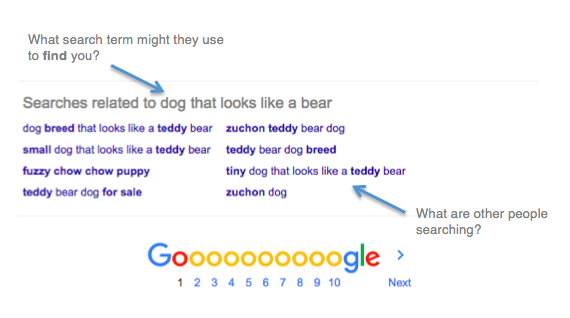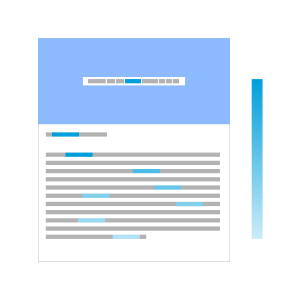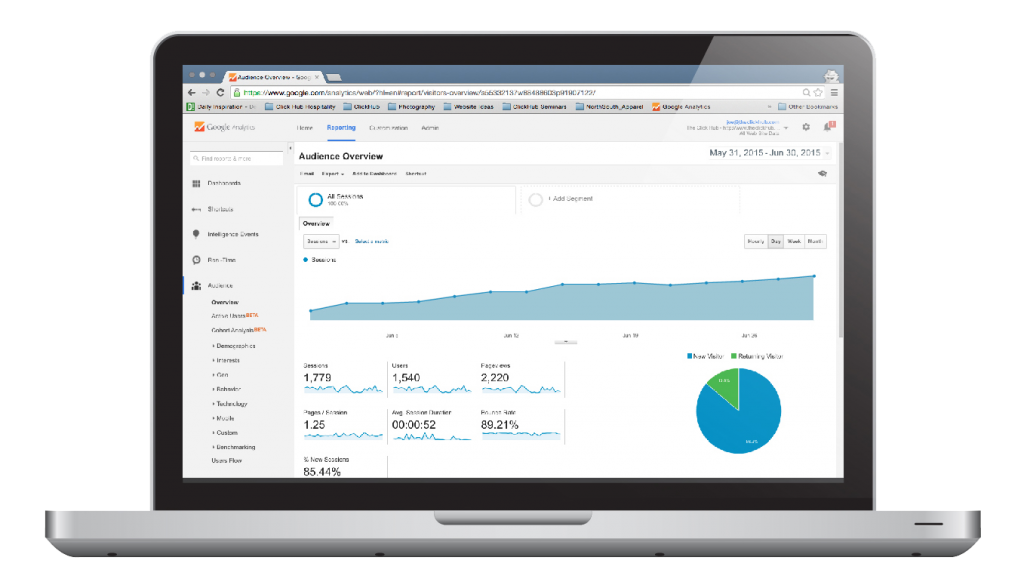SEO Mistakes You Might Be Making
01 December 2016
By Tovey
Our first step with a new client is always to run a free audit of their website in order to get an idea of the good, the bad and the ugly. Time and time again, we see the same ugly SEO mistakes being made. Could you be guilty of any of the following blunders?
1. Ignoring the meta data.
Quite often, people won’t write a dedicated meta-description and Google will use a snippet of page content related to the search term instead. But your meta data can be crucial in getting you found in the SERPs.
But what exactly is meta-data, you ask? Well, you’ll be happy to hear it’s not as mind-boggling as that totally meta film with Nicholas Cage that I had to sit through as part of my BA English degree. Meta data is, quite simply, data about data. It is so simple, in fact, that it’s surprising that skipping this step is one of the most common SEO mistakes we see.
Why do I need it?
Meta data is important for both the user and the search engines. From both an SEO and user’s point of view, meta data lets all parties know exactly what you’re all about. It’s a micro-communication between you and Google, and a chance to grab your user’s attention. It’s a glimpse through the window of your website, and a way letting them know you’re just what they’re looking for.
So how do I write one?
Writing your meta description is easy peasy. It just has to be between 50-154 characters, concise, captivating and ideally should contain your keyword. For example THIS:
Looks and sounds a lot better than THIS:
…Am I right? (Yes)
2. Not optimising for the right (if any!) keywords
Now I’m going to assume that most Internet-savvy people today know a thing or two about keywords. Perhaps that’s why I’m always surprised that the second most common SEO mistake I see is websites not optimising for the right keywords, or any keywords at all.
Maybe I’m being unfair and you genuinely don’t know how keywords work? Basically, they’re like little flags you hold up to search engines to let them know what you’re all about. These clear indicators enable them to easily match you to the users who are looking for you.
But I do already know this, you say, so what am I doing wrong?
Yes, a lot of Internet users today now know this, but the problem is that most people think about the words you feel define you. But what you really should be doing is getting into the head of your potential customer and thinking about the words they might use in order to find you.
Meanwhile, other people fall into the trap of choosing the wrong keyword because they go for volume and ignore the competition level. Great 20,000 people are searching for ‘Fuzzy Chow Chow Puppy’ a month (I know I am…) but if hundreds of other websites are competing for this search term then it’s easy to get lost in the crowd. No one will see your beautiful Fuzzy Chow Chow Puppy and that’s a sad thing. You need balance. Find a search term that is relevant, with a good search volume but a much lower level of competition. This will give the Fuzzy Chow Chow Puppy a fighting chance.
To be on top of your keywords you need to be constantly researching, finding what works best and updating as a result. You can use tools like Google AdWords Keyword Planner and Moz Keyword Explorer for this. You can also use the section at the bottom of the results page to get an idea of popular searches:
Other common keyword mistakes?
Now, you might have a good idea of what you want to be found for, but have you really optimised for it? Have you included the keyword in your main body enough times, without stuffing them in like that bird-inside-a-bird roast you made last Sunday? And have you casually slipped it into your meta description, page title, image title and alt tags? (I’ll talk more about this later)
3. Poor content
You’ve heard it. We’ve said. Content is King. Surely everyone on the Interweb knows this by now? That’s why Huffington Post publish something crazy like 1200 pieces of content per day! But despite this, one of the biggest SEO mistakes we see when we run an SEO audit is crappy content.
Define crappy?
It varies, a lot of the time webpages don’t even reach the minimum word count of 350 words that’s recommended by search engines. Other times it is 350 words of dull, unengaging drool with more grammatical errors than keyword occurrences.
In some cases, crappy content means duplicate content too, which is a big no-no for SEO. Duplicate content is blocks of content within or across domains that either completely matches or is pretty darn similar to other content. And it isn’t always intentional or an attempt at sneaky trickery.
So how do I fix this?
For starters, get your word count up to 350 words. And I don’t mean padding it out with useless fluff. Look at it like this: you’ve been blessed with 350 words so use it. Get those keywords in, tell your story, captivate the user so that they don’t bounce/drop-off/die of boredom. If you’re having trouble with duplicate content you can check how bad the situation is using Siteliner, and fortunately there are several solutions you can read about here.
4. Missing Alt Tags
While many people recognise that well-chosen images on your website will increase user engagement and strengthen your message, a lot of people will stop there. But what you need to be doing is giving those images good alt attributes. Technically, this isn’t required, so lots of people overlook this seemingly small aspect. But skipping it can mean missing out on a big potential.
What are alt attributes?
Originally, alt tags were for the blind and visually impaired, as screen readers read out this descriptive text to them. However, these tags have taken on an SEO aspect as they also strengthen the message being sent to search engines and ultimately improve your chances of being found. As scarily intelligent as they are, search bots still haven’t developed sight (as far as I’m aware) so they cannot see the images on your website. Instead, they rely on alt tags. For this reason, it’s important that the alt tags accurately describe what’s in the image. You’ll also want to include your chosen keyword but it needs to be in natural a way that makes sense.
5. Not using analytics to see what converts
Now, this mishap isn’t something that gets flagged by an SEO audit but it’s one of the biggest SEO mistakes we encounter every day. Less than 30% of small businesses use website analytics, 30%!!! Which is pretty crazy because the only way to know if your SEO optimisation is actually working is to track it. If your only tracking tool is typing your business into Google every day to see where you’re ranking, all you’re doing is messing up the search statistics *face palms*.
There are loads of tools available but we’d recommend starting with the Google Analytics and Google Webmaster tools, and you can find heaps of advice online to help you get to grips with them. You can even take exams and collect stickers on a chart to show off to all your colleagues like Harry does. So if you’re not interested in analytics, at least do it for the stickers… But seriously, Google Analytics is a very powerful tool for understanding how users are interacting with your website so you should be using it. It’s only by using these analytics tools that you can see what’s working and worth it, and what’s not.
If you’re guilty of any of these SEO mistakes or are interested in gaining a more comprehensive understanding of SEO, you can take a look at our Search services.





